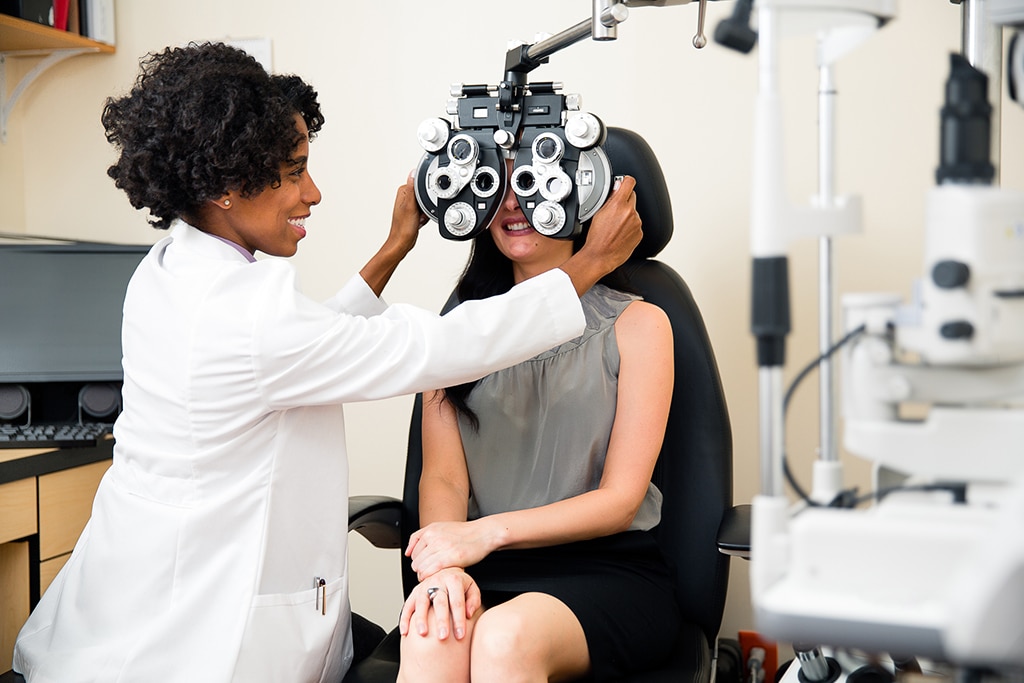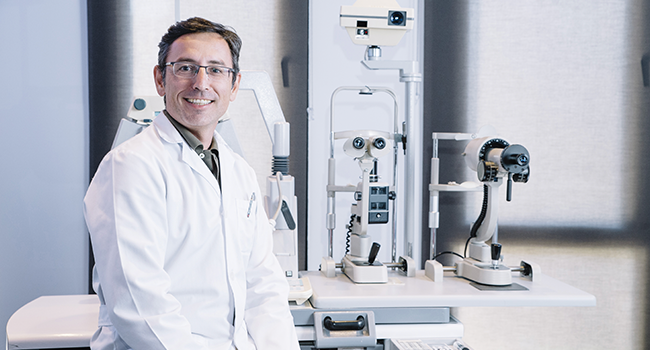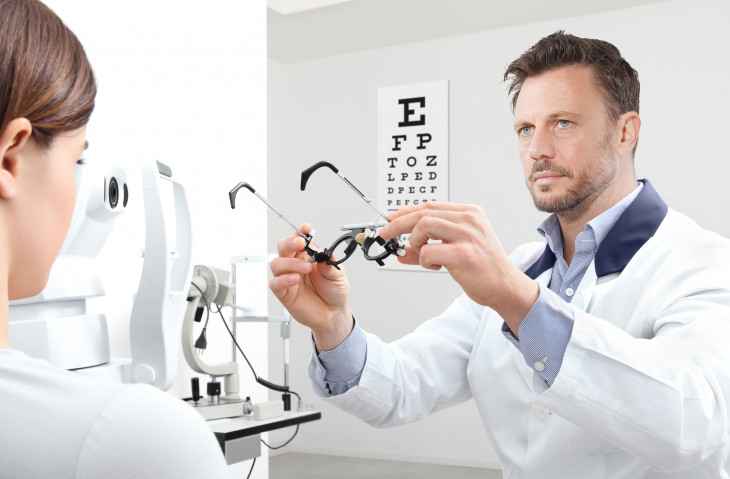Leading Reasons to Visit an Optometrist Chino for Your Eye Health
Leading Reasons to Visit an Optometrist Chino for Your Eye Health
Blog Article
Exploring the Most Recent Technological Innovations in Optometry and What They Mean for Eye Doctors
From the precision of Optical Coherence Tomography to the nuanced understandings offered by AI-driven diagnostic tools, these advancements are setting brand-new criteria in person assessment and therapy. As these developments penetrate the method, eye doctors are faced with the challenge of accepting these tools to boost individual outcomes.
Technologies in Diagnostic Devices
Advancing the area of optometry, advancements in analysis tools have revolutionized the means eye treatment professionals assess and detect aesthetic problems and eye problems. The past years has seen significant technical advancements, enabling even more precise and comprehensive analyses. Optical Comprehensibility Tomography (OCT), for instance, provides high-resolution cross-sectional images of the retina, permitting the very early detection of diseases such as glaucoma and age-related macular degeneration. This non-invasive imaging strategy has come to be essential in modern optometric method.
Another key development is the introduction of advanced corneal topography systems, which map the surface curvature of the cornea with precision. These devices are especially advantageous for fitting call lenses and detecting corneal disorders. Furthermore, electronic retinal imaging has changed standard ophthalmoscopy, using comprehensive, breathtaking sights of the retina that assist in comprehensive aesthetic examinations.
The advancement of wavefront aberrometry has also been essential, making it possible for the evaluation of refractive mistakes with unmatched precision (Opticore Optometry). This innovation helps in tailoring restorative lenses and improving surgical results for refractive surgical treatments. Jointly, these diagnostic advancements encourage eye doctors to provide remarkable individual care, making certain early treatment and customized treatment approaches, inevitably boosting aesthetic health and wellness outcomes
AI in Person Management
Building on the structure of innovative diagnostic tools, the consolidation of expert system (AI) in individual management represents a transformative leap for optometry. AI systems are significantly employed to boost performance, accuracy, and customization in client treatment. By analyzing huge amounts of data, AI can identify patterns and predict possible eye problems, making it possible for optometrists to tailor treatments better. This capacity is critical in taking care of chronic eye illness such as glaucoma and diabetic person retinopathy, where very early detection and continuous tracking are essential.
Furthermore, AI-driven systems promote structured individual interactions and administrative procedures. Automated scheduling, digital examinations, and personalized follow-up plans not just enhance person complete satisfaction however likewise enhance time administration for practitioners. These systems can triage people based on the necessity of their problems, guaranteeing that those in vital requirement receive punctual attention.
Additionally, AI enhances decision-making by offering eye doctors with evidence-based suggestions and treatment paths. By incorporating data from digital health documents, AI devices provide understandings that inform medical choices, lowering the threat of mistakes and boosting client end results. As AI remains to evolve, its duty in client administration will likely increase, improving the landscape of optometric care.
Advancements in Retinal Imaging
In the world of optometry, retinal imaging has actually experienced amazing technological innovations that are boosting diagnostic capabilities and individual care. Developments such as Optical Coherence Tomography (OCT) and fundus photography have actually transformed just how optometrists imagine and evaluate the retina. OCT, particularly, gives high-resolution, cross-sectional photos of the retina, enabling the detailed evaluation of its layers. This capacity is vital for early discovery and administration of problems like glaucoma, diabetic person retinopathy, and age-related macular deterioration.
Boosted imaging techniques like OCT angiography are additional refining analysis precision. Opticore Optometry. Such developments help with the recognition of minute retinal changes that might represent condition progression.
Additionally, innovations in man-made intelligence are increasing retinal imaging by making it possible for computerized evaluation of big datasets. These systems aid eye doctors in determining patterns a measure of pathology, thereby improving analysis precision and performance. Jointly, these advancements are transforming retinal imaging into a cornerstone of modern-day eye treatment, boosting results and broadening restorative opportunities.
Teleoptometry's Expanding Duty
Teleoptometry is significantly coming to be an important part of eye care, driven by advancements in digital communication and analysis tools. As optometry welcomes digital improvement, teleoptometry assists in remote consultations, allowing optometrists to prolong their solutions beyond typical limits. This is specifically useful in rural and underserved areas where access to specialized eye care is often restricted. By leveraging high-resolution video conferencing and advanced retinal imaging, optometrists can perform thorough eye examinations from afar, ensuring prompt medical diagnosis and treatment.
The integration of synthetic intelligence (AI) additional improves teleoptometry, making it possible for the evaluation of aesthetic data and assisting in the discovery of eye problems such as glaucoma and diabetic retinopathy. AI-powered algorithms can rapidly translate complicated imaging data, offering eye doctors with valuable insights that strengthen clinical decision-making.
Furthermore, teleoptometry supports connection of care via seamless combination with electronic health records (EHRs), permitting optometrists to keep extensive patient backgrounds. This makes certain that people receive personalized and consistent care even when speaking with different specialists.
Despite these advantages, obstacles stay, consisting of making certain data security and handling person expectations. Nonetheless, teleoptometry represents a considerable stride in the direction of more accessible, efficient, and patient-centered eye care. As technology advances, its function is positioned to expand even more.

Future Fads in Eye Care
A myriad of innovative fads is set to reshape the future of eye treatment, driven by technical innovations and the evolving needs of individuals. One significant fad is the assimilation of expert system (AI) in diagnostics, which guarantees to improve the accuracy and efficiency of eye assessments. AI formulas can examine large quantities of data from retinal images, possibly identifying conditions like diabetic person retinopathy and glaucoma earlier than standard approaches.
Furthermore, individualized medication is obtaining traction in optometry, with genetic screening educating customized treatment strategies. This approach aims to maximize client results by customizing treatments to private genetic profiles. Wearable innovation, such as clever get in touch with lenses, is additionally on the horizon, offering real-time monitoring of intraocular stress or sugar degrees, hence providing continuous insights right into eye and systemic health and wellness.
The adoption of enhanced fact (AR) try this site and virtual truth (VIRTUAL REALITY) in training and individual education is another emerging fad. These modern technologies look what i found provide immersive experiences that can boost understanding and skills both for people and eye doctors. As these fads evolve, optometrists must stay abreast of technological innovations to offer cutting-edge care, guaranteeing improved person end results and complete satisfaction in the dynamic landscape of eye treatment.
Final Thought

Jointly, these analysis advancements equip optometrists to supply premium individual care, making certain early treatment and customized therapy check my site approaches, ultimately enhancing visual wellness results.

As these innovations proceed to advance, eye doctors should adapt and integrate them into technique, ultimately maximizing operations effectiveness and boosting the criterion of eye care supplied to clients.
Report this page